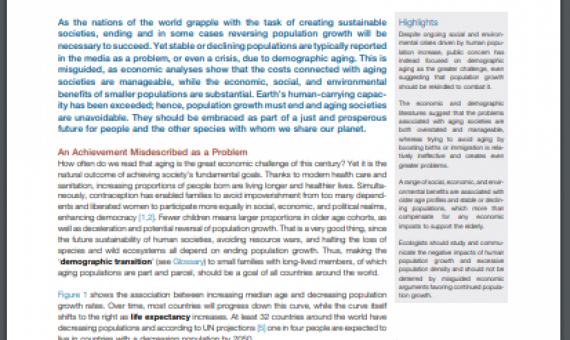A new study in the Lancet finds our global population may never reach 10 billion. A population slowdown will pose challenges, but it could also give us a better chance of avoiding ecological collapse. Population slowdown is not a reason for concern, but rather for celebration.
Coastal proximity of populations in 22 Pacific Island Countries and Territories
The coastal zones of Small Island States are hotspots of human habitation and economic endeavour. In the Pacific region, as elsewhere, there are large gaps in understandings of the exposure and vulnerability of people in coastal zones. The 22 Pacific Countries and Territories (PICTs) are poorly represented in global analyses of vulnerability to seaward risks. We combine several data sources to estimate populations to zones 1, 5 and 10 km from the coastline in each of the PICTs. Regional patterns in the proximity of Pacific people to the coast are dominated by Papua New Guinea. Overall, ca.
Marine Protected Areas are designed to benefit the marine ecosystem and human coastal populations, but are they actually achieving both? There are currently nearly 17,000 Marine Protected Areas (MPAs) across the globe.
Global Human Footprint on the Linkage between Biodiversity and Ecosystem Functioning in Reef Fishes
Difficulties in scaling up theoretical and experimental results have raised controversy over the consequences of biodiversity loss for the functioning of natural ecosystems. Using a global survey of reef fish assemblages, we show that in contrast to previous theoretical and experimental studies, ecosystem functioning (as measured by standing biomass) scales in a nonsaturating manner with biodiversity (as measured by species and functional richness) in this ecosystem.
Can Mike Berners-Lee's guide to changing how we think and live help us dump our dangerous habits and learn to use resources respectfully rather than rapaciously? Click on the link below for details on how to access the full article.
An attainable global vision for conservation and human well-being
A hopeful vision of the future is a world in which both people and nature thrive, but there is little evidence to support the feasibility of such a vision. We used a global, spatially explicit, systems modeling approach to explore the possibility of meeting the demands of increased populations and economic growth in 2050 while simultaneously advancing multiple conservation goals.
Despite ongoing social and environmental crises driven by human population increase, public concern has instead focused on demographic aging as the greater challenge, even suggesting that population growth should be rekindled to combat it.










